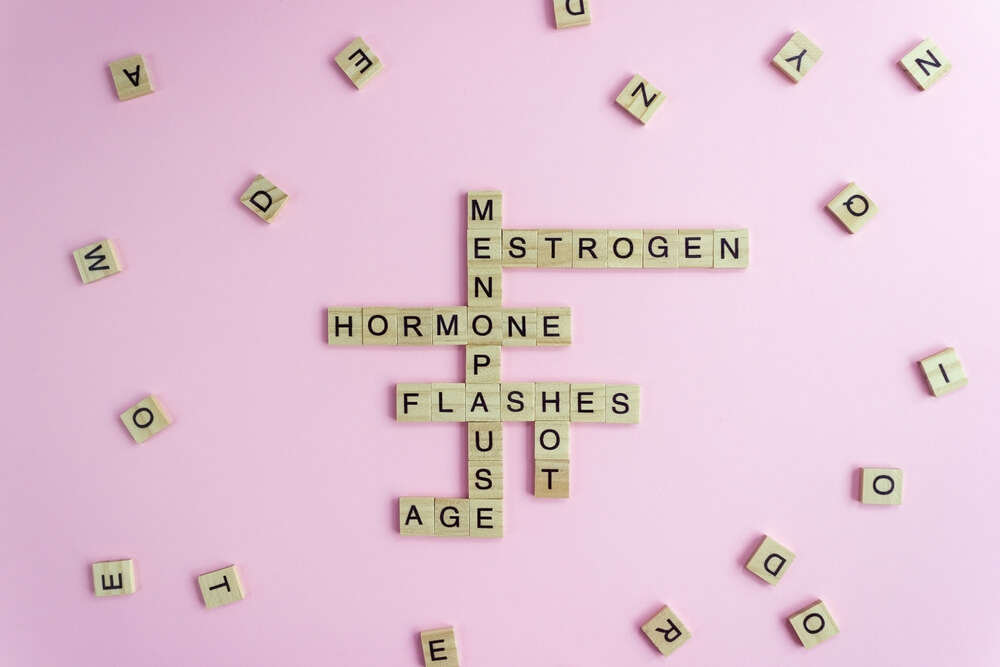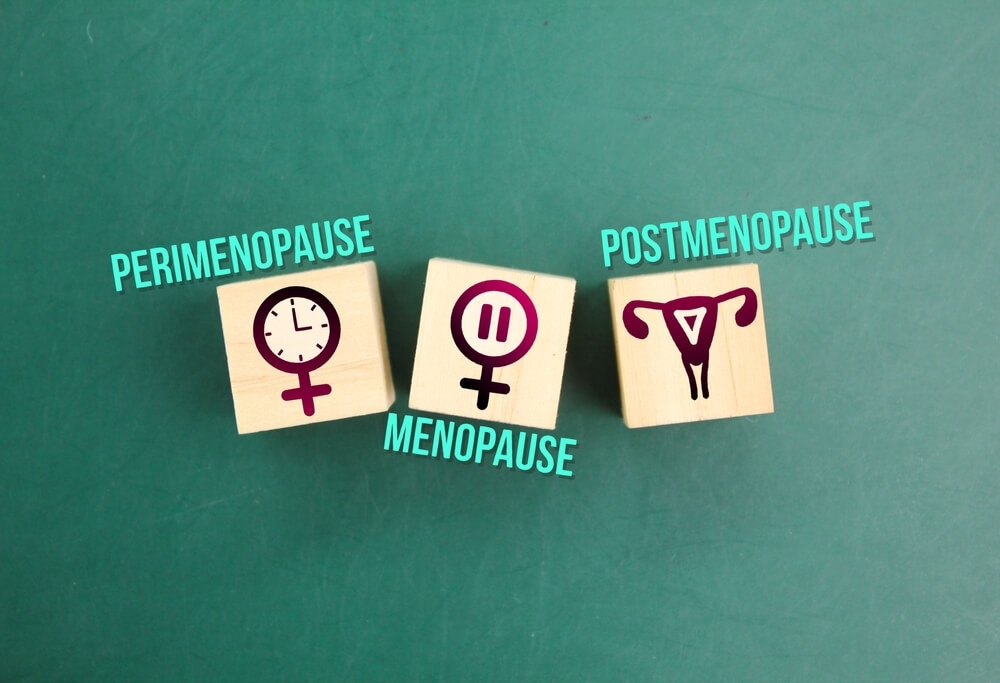Menopause is a natural biological process marking the end of a woman’s reproductive years. This transformative journey is characterized by hormonal fluctuations and various physical and emotional changes. Understanding the stages of menopause is essential for women navigating this significant life transition.
In this comprehensive guide, Dr. Andrew Krinsky and his team explore the three stages of menopause, delve into what each stage entails, and discuss important topics such as premature menopause and early menopause.
The Three Stages of Menopause
Perimenopause: The Prelude to Change
Perimenopause is the initial stage of the menopausal transition, typically beginning in a woman’s late 30s or early 40s. This phase is characterized by irregular menstrual cycles and fluctuating hormone levels, leading to a range of symptoms. Hot flashes, mood swings, and changes in libido are common during perimenopause.
Understanding Perimenopause:
- Hormonal Changes: Fluctuations in estrogen and progesterone levels contribute to the irregularity in menstrual cycles.
- Symptoms: Women may experience hot flashes, night sweats, insomnia, and mood swings. Changes in libido and vaginal dryness can also occur.
- Duration: Perimenopause can last for several years, with the average duration being four to eight years.
Menopause: The Transition Point
Menopause, often referred to as the “change of life,” is a natural biological process marking the end of a woman’s reproductive years. This significant transition officially occurs when a woman has not had a menstrual period for 12 consecutive months. On average, menopause commences around the age of 51, signifying the conclusion of the reproductive phase of life. As menstrual cycles cease, menopause initiates a complex journey marked by hormonal shifts, physical changes, and emotional adjustments.
Navigating Menopause: A Multifaceted Experience
Hormonal Shifts: A New Hormonal Landscape
Menopause marks a substantial decline in estrogen and progesterone levels, two key hormones that play pivotal roles in the female reproductive system. As the ovaries gradually cease to produce these hormones, the once-familiar monthly menstrual cycle comes to an end. This hormonal shift has profound implications for the body, impacting various physiological functions.
- Estrogen Decline: The most notable change is the significant decrease in estrogen levels. Estrogen, which regulates the menstrual cycle and supports various bodily functions, experiences a marked decline during menopause.
- Progesterone Decrease: Progesterone, responsible for preparing the uterus for pregnancy, also decreases. The interaction between these hormones becomes altered, leading to the cessation of monthly menstruation.
Symptoms of Menopause: Navigating the Changes
As hormonal shifts redefine the internal landscape, menopausal women often grapple with a spectrum of symptoms that can vary in intensity and duration.
- Hot Flashes: Sudden, intense waves of heat, known as hot flashes, are a hallmark symptom of menopause. These can be accompanied by sweating and a rapid heartbeat.
- Vaginal Dryness: Declining estrogen levels can lead to vaginal dryness, causing discomfort, itching, and pain during intercourse. Moisturizers and lubricants may be recommended to alleviate these symptoms.
- Mood Changes: Hormonal fluctuations during menopause can influence neurotransmitters in the brain, contributing to mood swings, irritability, and heightened emotional sensitivity.
- Changes in Bone Density: Estrogen plays a crucial role in maintaining bone density. With its decline, women may experience a gradual reduction in bone mass, increasing the risk of osteoporosis.
- Weight Gain: Changes in metabolism and hormonal imbalances can contribute to weight gain, particularly around the abdomen. Adopting a healthy lifestyle, including regular exercise and a balanced diet, becomes crucial.
- Higher Risk of Heart Disease: The decrease in estrogen is also associated with an increased risk of heart disease. Cardiovascular health should be a focal point during and after menopause.
Emotional Impact: Navigating the Mind-Body Connection
Beyond the physical changes, menopause is a deeply personal and emotional journey. The hormonal fluctuations can influence neurotransmitters, impacting mood, cognitive function, and overall emotional well-being.
- Mood Swings: Fluctuations in hormone levels may contribute to mood swings, ranging from elation to moments of sadness or anxiety.
- Irritability: Increased sensitivity to stressors and irritability are common emotional responses during menopause.
- Feelings of Sadness or Anxiety: The psychological impact of the transition, coupled with the end of the reproductive phase, can evoke feelings of sadness or anxiety.
Postmenopause: Embracing the New Normal
Postmenopause encompasses the years following menopause. During this stage, hormonal fluctuations stabilize, and many menopausal symptoms diminish. However, the absence of estrogen increases the risk of certain health issues, making postmenopausal care crucial for overall well-being.
Thriving in Postmenopause:
- Hormonal Stability: Estrogen levels remain consistently low during postmenopause, reducing symptoms like hot flashes and mood swings.
- Bone Health: Maintaining bone health becomes a priority, as the decline in estrogen increases the risk of osteoporosis.
- Heart Health: Postmenopausal women should focus on heart-healthy habits, including regular exercise, a balanced diet, and routine health check-ups.

Premature Menopause and Early Menopause: Understanding the Variations
While menopause typically occurs around the age of 51, some women may experience premature or early menopause. Premature menopause, occurring before the age of 40, and early menopause, happening between 40 and 45, present unique challenges and considerations.
Premature Menopause
Premature menopause, a condition where a woman experiences the cessation of menstrual periods before the age of 40, can be attributed to various factors that disrupt the natural reproductive cycle. Understanding the causes of premature menopause sheds light on the intricate web of influences that can impact a woman’s hormonal balance.
Premature Ovarian Failure (POF): One primary cause of premature menopause is a premature ovarian failure, a condition in which the ovaries cease to function properly before the age of 40. This failure results in a decline in estrogen production, leading to the onset of menopausal symptoms.
Genetics: A woman’s genetic makeup plays a crucial role in determining her reproductive lifespan. If there is a family history of early menopause or premature ovarian failure, the likelihood of experiencing premature menopause may increase.
Autoimmune Disorders: Certain autoimmune disorders, such as rheumatoid arthritis or lupus, can trigger an immune response against the ovaries. This immune attack may disrupt normal ovarian function, leading to premature menopause.
Medical Treatments: Some medical treatments, particularly those involving radiation or chemotherapy for cancer, can have a detrimental impact on ovarian function. These treatments may damage the ovarian tissue, accelerating the onset of menopause.

Early Menopause
Early menopause, occurring between the ages of 40 and 45, is another facet of the menopausal spectrum that brings with it a distinct set of causative factors. Unraveling the triggers behind early menopause is essential for understanding the complex interplay of genetic, surgical, and medical influences that can expedite the onset of this significant life transition.
Genetic Factors: Similar to premature menopause, genetic predisposition plays a pivotal role in the timing of menopause. If a woman has a family history of early menopause, she may be more susceptible to experiencing menopausal symptoms at an earlier age.
Surgical Intervention (Hysterectomy): One of the surgical interventions that can lead to early menopause is a hysterectomy, the removal of the uterus. In cases where the ovaries are also removed (oophorectomy), the immediate cessation of hormonal production triggers menopause. Even if the ovaries are left intact, the blood supply to the ovaries may be compromised during surgery, hastening ovarian failure.
Medical Treatments: Certain medical treatments, including radiation or chemotherapy for cancer, can induce early menopause by adversely affecting ovarian function. The impact of these treatments on fertility and hormonal balance can accelerate the onset of menopausal symptoms.
Navigating the Menopausal Journey
Understanding the three stages of menopause—perimenopause, menopause, and postmenopause—empowers women to navigate this transformative journey with knowledge and resilience. Whether facing the challenges of perimenopausal symptoms, embracing the changes of menopause, or prioritizing postmenopausal health, women can make informed decisions about their well-being. Additionally, recognizing the variations in premature and early menopause allows for tailored approaches to care and support. As women prepare for this natural life transition, seeking guidance from healthcare professionals and embracing self-care practices are key components of a positive menopausal experience.
That said, if you’re looking for menopause treatment in Tamarac, feel free to schedule an appointment with Dr. Krinsky today.


